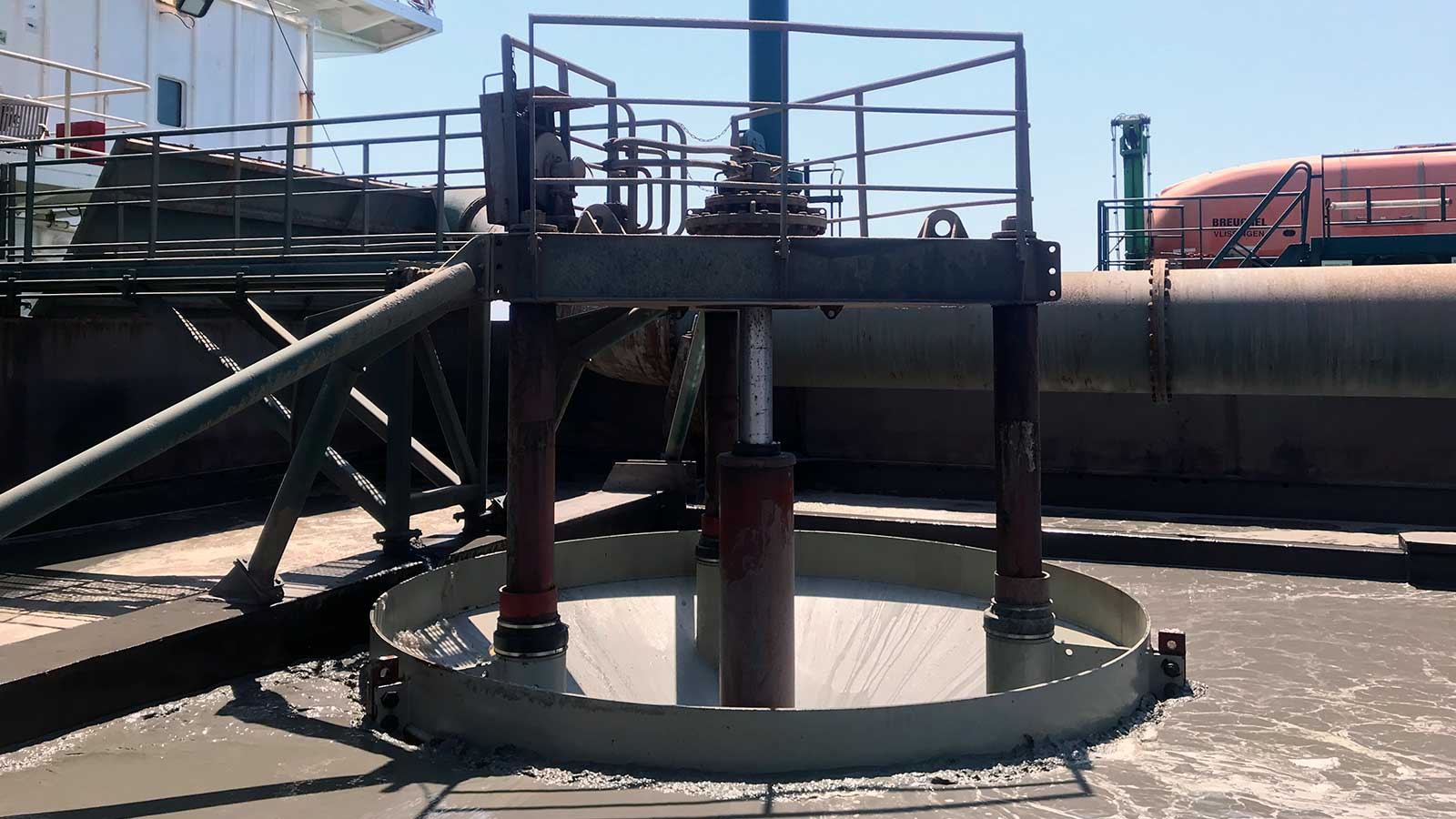Keep the (over)flow going

Innovation is an evolving process. Years ago, our dredging customers came to us with a number of issues caused by the overflow process. I reported about these issues in the innovation blog ‘Going against the flow’. Our solution came in the development of an improved design of the overflow system, a patented innovation called the Plumigator® overflow. Tackling the most well-known problems of turbidity, plume, and air beneath a vessel. Since the early development of the Plumigator® overflow, we have been working on the continuous improvement of this innovation aiming at creating a solution that is both sustainable as well as beneficial to our customers’ operational efficiency.
Customer feedback is key
Since its creation, we have been receiving valuable customer feedback about the Plumigator® overflows functionality. While successful in limiting air release and turbidity during dredging, offering environmental as well as economic benefits, the Plumigator overflow was not without its own challenges. In some challenging projects the dredging process needed to be halted due to debris clogging up the gratings which cover the water inlets. The gratings, which are meant to keep out large foreign objects, collected tree stumps, sea grass and lots of plastic debris.
Reducing overflow blockages
Easy cleaning and maintenance of the Plumigator® overflow was crucial to ensuring uptime in dredging operations. But how could we best ensure that the overflow would not clog and that cleaning could be done in a safe and efficient way? By adjusting the inlet opening sizes and making part of the overflow moveable.
Optimising the inlet opening created a larger passage for debris and further reduced the need for grating. Making the insert moveable ensures the release of yet collected debris and ease of accessibility for maintenance and inspection. Both ultimately improve uptime as operations no longer need to halt for lengthy, costly and sometimes tedious maintenance work.
The patented design of the inlet openings also reduces the velocity of excess water in the hopper. This is beneficial as it allows the soil particles extra time to settle. Combine this with the decreased weight of the construction an increase in production by reduced loading time and increased payload is created.
Success in practice
The improved Plumigator® overflow has been both retrofitted as well as newly fitted on over 20 dredging vessels. Feedback from customers has been positive, confirming that the Plumigator® overflow does in practice what it was designed to do and that the design changes positively impact uptime.
Written by
Erwin Bijvoet
Product Manager

Want to know more about the Plumigator overflow?
Fill in the form and our experts will contact you.